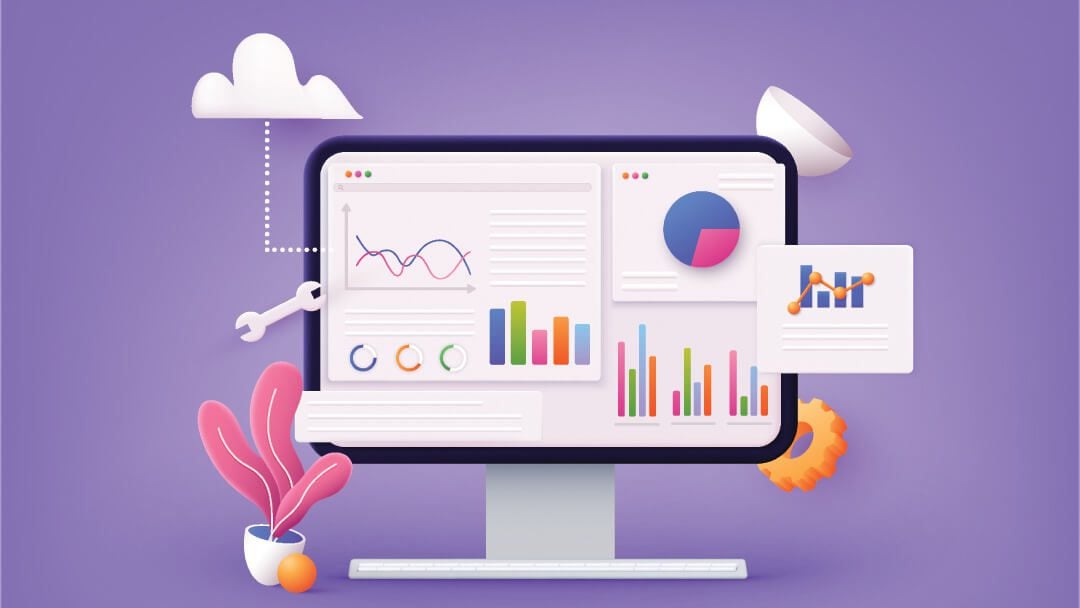Introduction
To optimize your website like a pro in 2025, your technical SEO checklist should include improving site speed, enabling mobile responsiveness, fixing crawl errors, implementing HTTPS, submitting XML sitemaps, using schema markup, and optimizing for Core Web Vitals. These behind-the-scenes elements are crucial for helping search engines index your site and ensuring users have a seamless experience.
Whether you’re running a local business in Toronto or a growing eCommerce brand in Austin, following a solid technical SEO checklist is the foundation for sustainable organic growth.

What Is Technical SEO?
Technical SEO refers to the behind-the-scenes aspects of your website that make it easier for search engines like Google, Bing, and DuckDuckGo to crawl, index, and rank your content. While on-page SEO focuses on your content and keywords, technical SEO ensures your website’s architecture, code, speed, and security are optimized.
Why It’s Crucial for SMBs
Small businesses often operate in highly competitive local markets. With technical SEO, you’re giving your content the infrastructure it needs to:
- Get found faster
- Load quicker
- Perform better across devices
- Stay compliant with SEO best practices
A well-optimized technical foundation means more organic traffic, higher engagement, and ultimately, more leads or sales.
Eye-Opening Technical SEO Statistics
- 53% of website traffic comes from organic search (BrightEdge, 2024)
- 40% of users abandon a site if it takes more than 3 seconds to load (Google)
- 73% of small businesses in North America have broken links or crawl issues that hurt their rankings (SEMrush, 2024)
- Mobile-friendly websites have a 27% higher conversion rate for local searches

The Ultimate Technical SEO Checklist for 2025
Below is a 17-step, in-depth checklist tailored for Canadian and U.S. SMBs. Follow this regularly—monthly or quarterly—for long-term SEO health.
Set Up Google Search Console & Bing Webmaster Tools
What to do:
- Verify your website using DNS, HTML file, or tag
- Submit XML sitemap
- Check Coverage & Mobile Usability reports weekly
Canada Insight: Bing usage is higher in provinces like Alberta and British Columbia, especially for B2B audiences—so don’t ignore Bing!
Tools: Google Search Console, Bing Webmaster Tools
Submit an XML Sitemap
Why it matters: A sitemap acts as a roadmap for search engines to discover your key pages.
How to create:
- Use SEO plugins (Yoast, Rank Math) or online generators
- Exclude noindex pages, tags, categories
- Keep it clean—no 404s or duplicate URLs
Update your sitemap every time you publish or delete major content.

Secure Your Site with HTTPS
Why? HTTPS is now a ranking factor and critical for trust.
- Install an SSL certificate (free via Let’s Encrypt)
- Redirect all HTTP URLs to HTTPS
- Update canonical URLs and internal links
Stat: 82% of Canadians abandon a site if they see a “Not Secure” warning (Statista, 2023)
Optimize robots.txt
This tiny file can make or break your SEO.
Allow: Pages and resources you want indexed
Block: Admin pages, search results, cart, filters
Sample:
plaintext
CopyEdit
User-agent: *
Disallow: /wp-admin/
Allow: /wp-admin/admin-ajax.php
Sitemap: https://yourdomain.com/sitemap.xml
Double-check with robots.txt tester.
Also Read : Advanced Local SEO Strategies
Fix Crawl Errors & Broken Links
Broken internal links confuse users and waste Google’s crawl budget.
- Tools: Ahrefs, SEMrush, Screaming Frog, GSC
- Set 301 redirects for dead pages
- Remove outdated internal links
Use Case: A real estate agency in Toronto removed 98 broken links and saw a 12% improvement in organic visibility in 6 weeks.
Make Your Website Mobile-Friendly
Google now uses mobile-first indexing.
- Use responsive design
- Compress images and remove intrusive pop-ups
- Test mobile UX with Google’s Mobile Test Tool
Stat: 63% of local searches in the U.S. originate from smartphones.
Improve Site Speed (Core Web Vitals)
- LCP (Load Speed): Under 2.5s
- FID (Interactivity): Under 100ms
- CLS (Layout Shift): Below 0.1
Tools: Google PageSpeed, GTmetrix (Canadian data centers), WebPageTest
Tips:
- Enable lazy loading
- Use fast hosting (SiteGround, Cloudways)
- Minify CSS, JS
- Use CDN (Cloudflare, Bunny)

Use a Logical URL Structure
- Use hyphens (-) for readability
- Keep URLs short, keyword-focused
- Avoid stop words (like “and”, “of”, “the”)
Example: /toronto-seo-services/
Avoid: /index.php?id=2341&cat=seo
Use Case: A dentist in Vancouver improved traffic by 19% just by rewriting service page URLs.
Implement Canonical Tags
Canonical tags avoid duplicate content issues, especially in:
- Product variations
- UTM-tagged URLs
- Blog categories
Use plugins to auto-canonize URLs in WordPress and Shopify.
Also Read : Ultimate Types of SEO Tools
Add Structured Data (Schema)
Schema helps search engines understand your business better.
Implement:
- LocalBusiness (address, hours, contact)
- FAQPage (great for long-form blogs)
- Product and Review schema for ecommerce
Use Google’s Rich Results Test to validate.
Use Case: A fitness studio in Ottawa added LocalBusiness schema and saw an increase in Map Pack visibility within 3 weeks.
Avoid Redirect Chains
- 301 > final destination (ONE step only)
- 301 > 301 > 301 = Slow UX + SEO penalty
- Check using Screaming Frog or Redirect Checker.
Design a Custom 404 Page
Why? To keep users on-site and improve navigation.
Best Practices:
- Keep it branded
- Offer helpful links or a site search
- Add humor if it fits your brand
Plugins: SeedProd, Elementor, Shopify Custom 404

Leverage Local SEO Signals
Especially important for service-based SMBs in North America.
Checklist:
- Claim & optimize your Google Business Profile
- Consistent NAP across all listings
- Add location pages for each city you serve
- Embed a Google Map
- Include province/state in metadata
Directories:
- U.S.: Yelp, BBB, Local.com
- Canada: YellowPages.ca, n49.com, CanadaOne.com
Monitor Indexation Status
Not all pages should be indexed.
- Use noindex on thank-you pages, search pages, admin areas
- Inspect URLs in GSC regularly
- Review sitemap vs. indexed pages
Tip: A high number of Discovered – not indexed pages could signal duplicate content or slow loading times.
Enable Breadcrumb Navigation
Breadcrumbs help users AND bots understand page hierarchy.
- Add breadcrumb trails to internal pages
- Use BreadcrumbList schema
- Display on both desktop and mobile
CMS tip: Most modern WordPress themes support breadcrumbs via Rank Math or Yoast SEO.
Enable Multilingual Support (Optional for Canada)
For Quebec, Ottawa, or bilingual audiences:
- Use hreflang tags
- Create separate URLs (e.g., /en/ and /fr/)
- Avoid auto-translators—use native-speaking translators
Bonus: Google rewards accurate, localized content across regions and languages.
Perform a Quarterly Technical Audit
Every quarter:
- Re-check sitemap & robots.txt
- Audit Core Web Vitals
- Test on mobile
- Fix new 404s or redirect issues
- Ensure your plugins/themes are updated
Tools: Ahrefs, Screaming Frog, SEMrush, Google Lighthouse
Bonus Tip: Use AI for Technical SEO Insights
AI tools like ChatGPT, Surfer SEO, and Jasper can help:
- Draft schema code
- Suggest page speed fixes
- Simulate crawl issues
Expert Insight
“You don’t need a massive budget to win with SEO. You need the right technical foundation and a consistent review schedule. For local businesses, this can mean the difference between surviving and thriving online.”
— Shawn Fisher, SEO Consultant, Toronto

Recap: Why Technical SEO Should Be Your Top Priority
| Benefit | Why It Matters |
| Faster Site | Improves rankings and user experience |
| Mobile-Friendly | Aligns with Google’s indexing algorithm |
| Crawlable Structure | Ensures all pages are found and ranked |
| Secure Connection | Builds trust and ranking signals |
| Local Optimization | Attracts nearby, ready-to-buy customers |
Final Thoughts
Technical SEO is not just for big brands or developers—it’s for any small business owner who wants to outperform competitors organically, build trust with users, and create a seamless digital experience.
- Start with this checklist.
- Revisit it quarterly.
- Watch your growth multiply.
FAQs
Industry Experiences
Innovative services for your business
We’re dedicated to making your businesses reliable, efficient, and safe.
We’re a one-stop solution for everything IT you need. Whatever you need, we got you covered:
Technical SEO refers to website optimizations that help search engines crawl, index, and understand your site. For small businesses, technical SEO is crucial because it ensures your content gets discovered and ranked. It directly impacts page speed, mobile-friendliness, security (HTTPS), and crawlability—factors that influence organic search performance.
It’s best to conduct a technical SEO audit every 3 to 6 months. However, if you’re frequently updating your website or launching new pages (especially for ecommerce or seasonal services), a monthly mini-audit is a smart move to catch crawl errors, broken links, and performance issues early.
Yes, many technical SEO tasks can be done in-house using tools like Google Search Console, Screaming Frog, and PageSpeed Insights. Platforms like Shopify, WordPress, and Wix also offer built-in SEO features. However, if your site has complex architecture or ongoing errors, hiring a local SEO consultant or freelancer might speed up results.
Absolutely. Technical SEO is foundational for local SEO success. For businesses in Toronto, Vancouver, New York, or Chicago, optimized technical elements (like site speed, mobile responsiveness, and local schema markup) improve visibility in Google Maps, local packs, and geo-targeted searches.
Some of the most frequent mistakes include:
- Missing or broken sitemap.xml files
- Not setting up Google Search Console
- Slow mobile load speeds
- Duplicate content without canonical tags
- Incorrect use of robots.txt (blocking important pages)
Fixing these can significantly improve your site’s ability to rank and convert visitors into customers.




